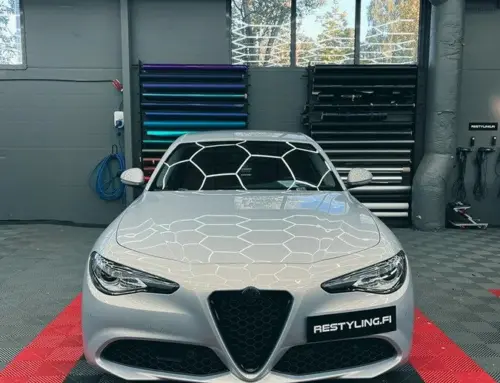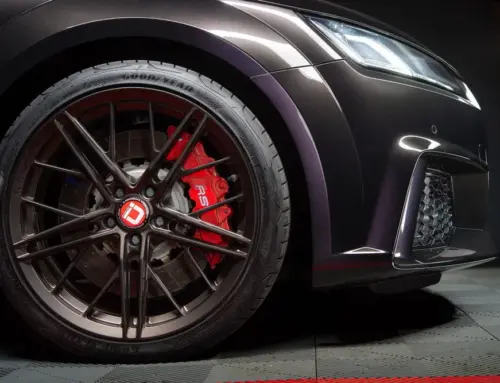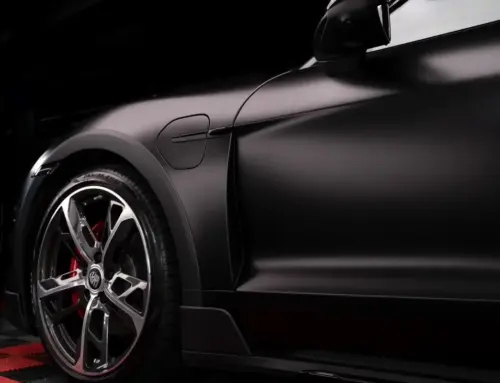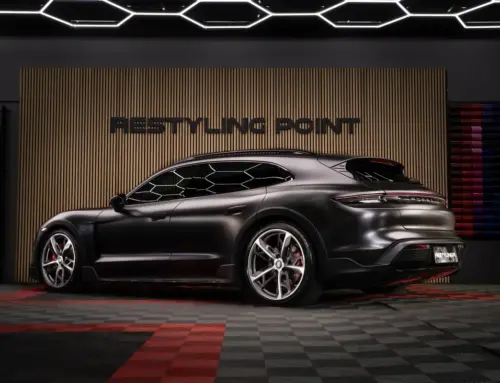- Can you remove the tape yourself?
- Tools
- What to do if the tape does not come off?
- Can paint come off during tape removal?
- Tape removal at Restyling Point
- How much does tape removal cost and how long does it take?
- Risks in tape removal
- How to prevent surprises in tape removal
- Customer experience, €2430 tape removal
- What to do after tape removal?
A new car that is completely wrapped in tape. The tape may look worn and scratched, and its condition may have deteriorated due to use. Now you are wondering how to remove this tape from the car as easily as possible. The goal of this blog is to provide our customers with comprehensive information about the risks and various factors related to tape removal, so you can make informed decisions about the process. – переведи на

Can you remove the tape yourself?
If you want to save money and decide to remove the tape yourself, we recommend reading this text carefully to get the best tools for tape removal.
Start removing the tape simply by heating a small area with a heat gun until it’s warm. Grab the edge of the tape and gently pull it towards you. If the tape comes off the surface cleanly without cracking, you can be sure that the tape is of good quality. If the tape starts to crack and tear, it is likely of poor quality and will be difficult to remove.
Primer can be used in tape installation to improve adhesion. Professionals usually do not use primer. It might also be used on flat surfaces, but this is not in line with industry standards. While the tape adheres better, removing it becomes very labor-intensive.
If a lot of primer has been used on the car, such as for taping door sills, be prepared for more extensive work. In the worst case, the tape might come off in small pieces, and without removing the doors, it can be challenging to reach all taped areas by hand.
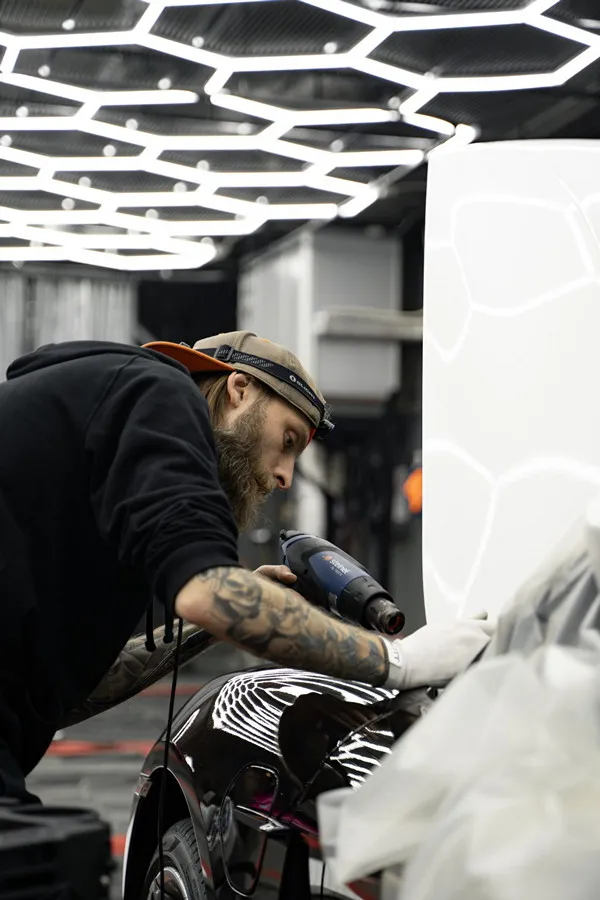
Allow plenty of time for tape removal. If the tape is difficult to remove, it can take from 8 to 10+ hours for a standard passenger car. Always remove tape in a warm environment. Cold tape will crack and can be very challenging to remove. The indoor temperature should always be above +17 degrees Celsius. Before removing the tape, it is recommended to wash the car thoroughly. Removing tape from a clean car is significantly more pleasant than from a muddy one. Here are the tools you will need for tape removal:
– Heat gun
– Steam cleaner
– Infrared heater (not mandatory)
– Squeegee or another tool with sharp plastic edges
– Longer sharp plastic tool
– Adhesive remover
– Plastic razor blade
– IPA / Surface cleaner for finishing surfaces
– Toffee disc and drill
– Car washing equipment and solvent cleaner
– Car polishing tools and compounds
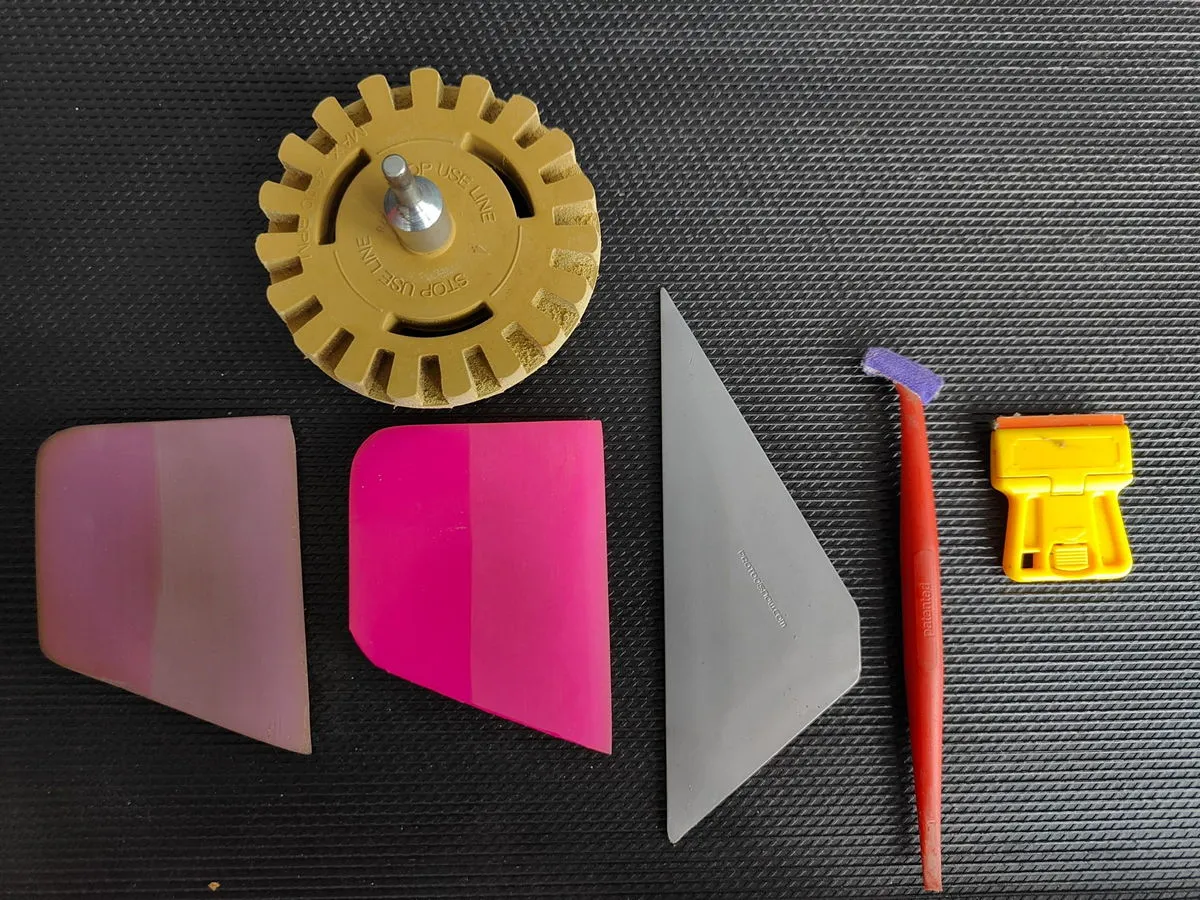
Tools
Among the tools, the steam cleaner is the most effective. Scalding hot steam heats the tape’s adhesive much more effectively than a heat gun. The steam spreads over a much larger area than the heat gun. When using a steam cleaner, pay attention to handling the cleaner as the steam can quickly cause burns. The heat gun is easier for removing tape in specific areas. For example, removing tape from a mirror is much more convenient with a heat gun, as well as from the inner parts of the door frames.
Using scrapers, you can scrape off tapes from tight spots. Especially in the inner parts of the doors where tapes may be under the hinges, sharp long plastic tools are practical. The toffee disc can remove primers and other stubborn adhesive residues. Be cautious when using the toffee disc, as it heats up the car’s surface and can potentially damage the car’s lacquer. The toffee disc can also scratch the car’s paint surface. After using the toffee disc, the surface must be polished to remove any scratches. For adhesive removal, we recommend using Gtechniq’s Tar and Glue remover. This product has been proven effective.
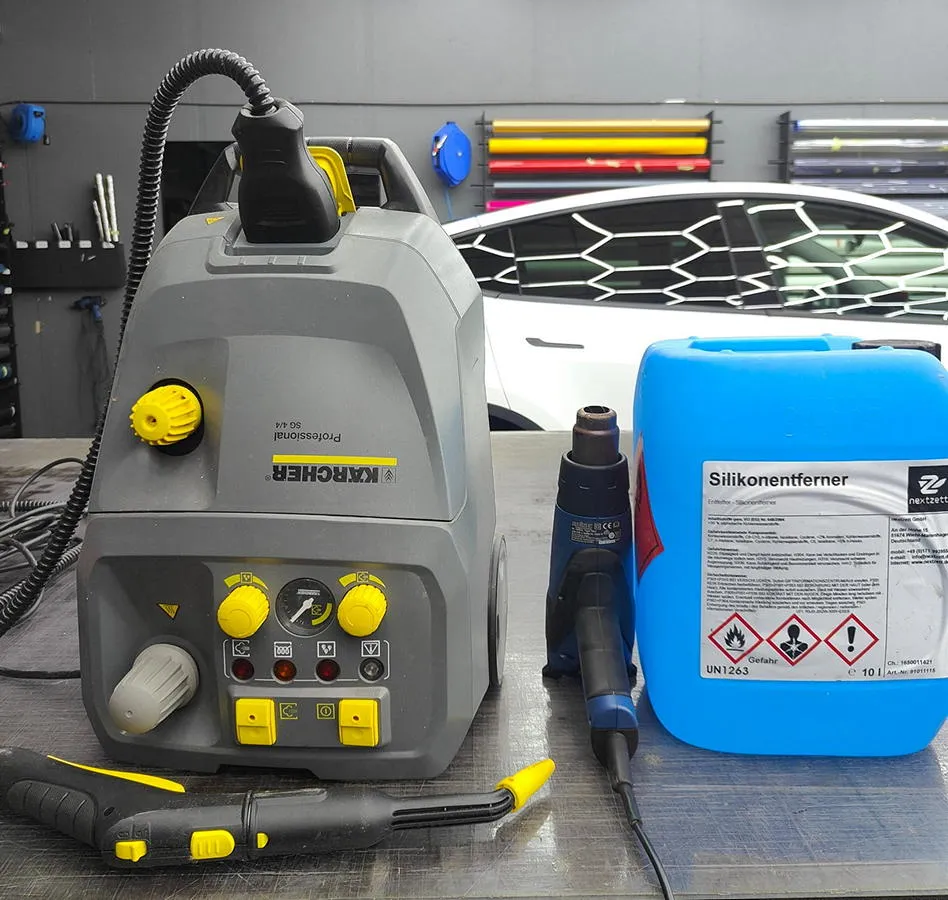
What to Do If the Tape Does Not Come Off?
The worst possible outcome is that the tape comes off poorly and cracks when heated. There are a few tricks that might make the job easier for removing such tape. By heating the tape very hot, you may be able to get the tape off more easily. However, heating the tape very hot may damage the car’s lacquer, so be careful when heating the tapes. Time the removal of difficult tape for the summer and a very hot day. Drive the car out into the sun and remove the tapes at the same time. The sun heats the surfaces, and with a steam cleaner, you can get the surfaces hot enough.
There is also a gel available for removing tape that is applied over the tape and softens the tape’s adhesive, making removal easier. Generally, these substances are not found in consumer stores, but for example, our partner Routec Oy has such a substance.
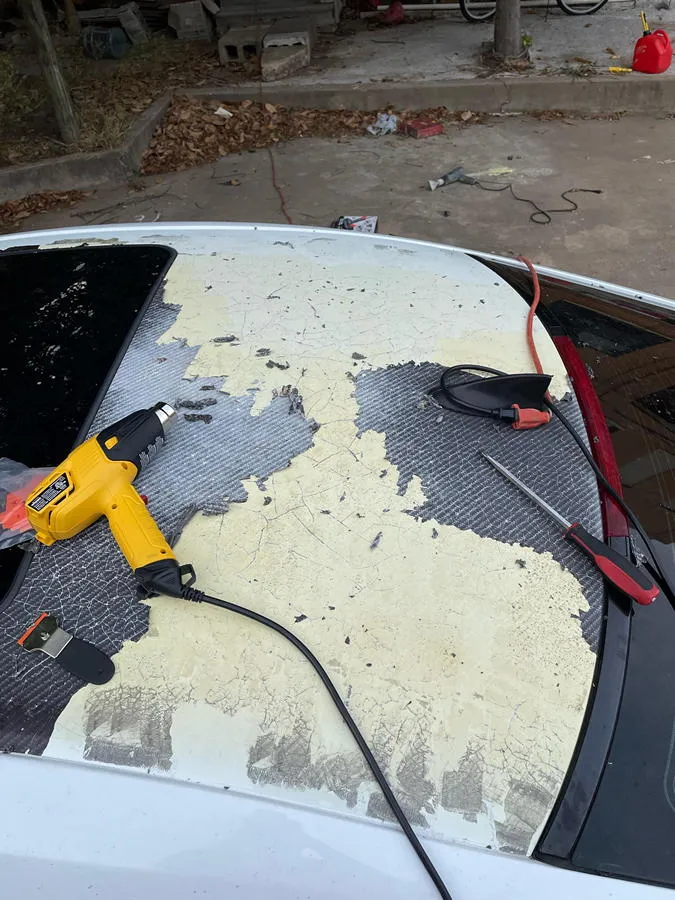
Can the Car’s Paint Come Off During Tape Removal?
If the car is partially painted and the tape is applied to a fresh paint surface (less than 6 weeks from painting), there is a significant and likely risk of the paint coming off if the tape needs to be removed. If the paint has not had the opportunity to dry properly but is sealed by taping, the paint surface may chip or come off as the tape is removed. The paint needs to dry for at least 4-6 weeks after painting. However, we still recommend waiting 6 weeks before re-taping the car. If the paint comes off during tape removal, the responsibility usually lies with the car owner or the paint shop. Since the tape product is designed to be removable without damaging the original surface, the adhesives in the tape are not aggressive enough to pull the paint off with it. Therefore, the most common reason for paint peeling is inadequate painting preparation and insufficiently dried paint after painting. It would be good to inform the professional service if you suspect that the paint might peel off during tape removal.
Tape Removal at Restyling Point
If you decide to have the tape removed by a professional, we are here to help. We have removed tapes from hundreds of vehicles, so we can do it quickly. The cost of tape removal considers the quality of the tape, the parts of the car that have been taped, and whether primer was used in the taping. The size of the vehicle and challenging shapes may also increase the amount of time required. You can get the best offer by sending a picture of your car to our email “[email protected]”
What Does Tape Removal Cost and How Long Does It Take?
The price for tape removal is always charged by the hour. It takes an average of 3-6 hours to remove tape from a standard-sized car if the tape is of high-quality material and comes off without major issues. We charge €120 per hour for tape removal. The removal of tapes from the interiors of doors is always considered on a case-by-case basis. This depends on whether doors or other panels need to be removed. If a large amount of primer is used in the taping, the cost of tape removal can multiply. One way to save money is to remove tapes from the vehicle that come off easily. For example, the largest flat surfaces are usually the easiest to remove. You can bring a partially taped car to us, and we will remove the tapes professionally and with minimal risks.
Example cases in tape removal:
- Tapes from a Volvo V70 taped with 3M tape were removed in 3 hours, although the tape had been on the car for 8 years.
- A Tesla Model X was stripped of tapes in 3.5 hours, using Avery Dennison Matt Black.
- A Lamborghini Gallardo was returned to its original color in 4.5 hours, using Hexis tape.

Risks of Removing Tape
Removing tape comes with its own risks. Although the task sounds relatively simple, it can severely damage the car’s paint finish at worst. Tape removal is always done at the customer’s own risk. Cars that have been restyled with tape usually do not encounter problems during tape removal, as we do not use primers and only tape onto dried surfaces.
We often encounter situations where the taping has been done too soon after painting. Usually, the customer or the car dealership has no information about this, and when the tape is removed: the paint comes off with it. This is because the tape was applied to fresh paint less than 4-6 weeks after painting. The paint has not had time to dry and harden onto the surface. In summary, the rule of thumb: do not tape for 4-6 weeks after painting, let it dry for four to six weeks and then get it taped.
When heating the tape, always keep a distance of 30cm from the tape with a heat gun. Uncontrolled use of a heat gun can, at worst, melt plastic parts of the car. Always feel the tape with your hand, and when the tape feels hot, stop heating. Also be careful with decorative trims in the car and other non-taped parts. When heating near these, keep a considerable distance from these parts. Decorative trims and other plastic parts can change color easily. Always turn off the heat gun when not in use. If you place the heat gun too close to the car and leave it on, you may damage the paint finish.
When pulling the tape, make sure that the tape’s adhesive has softened so you do not accidentally pull off car panels using force. One easily detachable part in a car is the fuel cap cover. Always pull the tape gently and heat the tape more if it does not come off easily. The risk of tape adhesives remaining increases if the tape’s adhesive has not softened enough and you remove the tape using force.
If you use tools in tape removal. Do not touch the tools to the paint surface or scrape adhesive residues on the paint surface with a hard or metal tool. In the worst case, you might scratch the paint so deeply that it cannot be fixed by polishing alone and needs to be repainted. Assist with tools only to help the tape come off and use adhesive removers for removing adhesives. Carefully read the manuals for using adhesive removers and pay attention to the drying times of the materials. The material can dry onto the paint surface, leaving unsightly marks. These marks can still be removed mechanically by polishing.
If there are still adhesive residues after using the adhesive remover. You can carefully use a plastic tool to scrape off the remaining adhesive. However, be careful not to unnecessarily scratch the paint. Try the adhesive remover several times before switching to a plastic blade. Washing the car with a solvent may effectively remove adhesive residues.
You may have seen a video where tape is removed with a pressure washer. This method is a very dangerous procedure. Even if the tape comes off easily, there is a risk that the pressure shot too close can get under the varnish and cause varnish damage. Do not also remove adhesive residues from the car’s paint surface with a pressure washer. Let the agents do this work and use the pressure washer only for rinsing.
In the removal of interior taping, use the heat gun cautiously. Heat only the necessary amount and turn off the heat gun. Do not use too much force when removing the tape, so that the car parts do not detach or come out of place. If any part of the car’s interior comes off, it may break fasteners and the part may no longer stay in place. Fasteners cannot always be repaired, and the part must be changed. Be careful in removing interior taping and use force only to the extent that the tape starts coming off. Add heat if the tape feels firmly attached.
How to Prevent Problems in Tape Removal?
If you decide to have your car taped, always think a little further. Preferably choose high-quality material, so that tape removal is also trouble-free. Cheap tapes are generally tapes whose removal after years based on experience causes difficulties. 3M, Oracal, Avery, Hexis, and Kpmf are quality-tested tapes. These tapes are more expensive than those produced in China, but the result is significantly better quality. These tapes stay looking good and should not present any major problems during removal.
Also consider the workshop where you take your car. Ask them about the use of primer and where they would apply it. In principle, primer is not needed at all if the taper is a skilled person who knows the capabilities and limits of the material, as well as the possibilities and risks. Primer can only ensure that certain difficult spots stay in place and mitigate the lack of skill from the taper.

Customer Experience: €2430 Tape Removal
We received a Tesla Model 3 for tape removal. The car had previously been taped in another country with an orange color (exterior + door gaps + hinges). The tape looked high quality, but its execution was not very professional. Initially, we estimated that tape removal would take a maximum of 3-6 hours, which is a standard time estimate for this car based on our experience.
When we started removing the tapes, we noticed that a lot of primer had been used on the tape, liters of it. Primer had been applied to every edge and corner, even where it is not normally needed. The insides of the car doors were taped, and the tapes were even placed under the hinges. All the interior door tapes had been done with the help of primer. Removing the doors was not possible due to time constraints, so we had to remove all the tapes from under the door hinges one small piece at a time. The tape came off the car in coin-sized pieces, and then we had to remove the primers separately.
Tape removal ultimately took 27 hours. The tape was coming off even from the exterior surfaces in small pieces, which further slowed down the process. The total cost of tape removal was ultimately €2430. This case is a good example of how difficult tape removal can become.
At this point, the customer had to accept the consequences of the previous tape installation and pay an incredible amount just for tape removal.
This case is currently an extreme example of how expensive the tape removal process can be. Unfortunately, these cannot be known in advance.
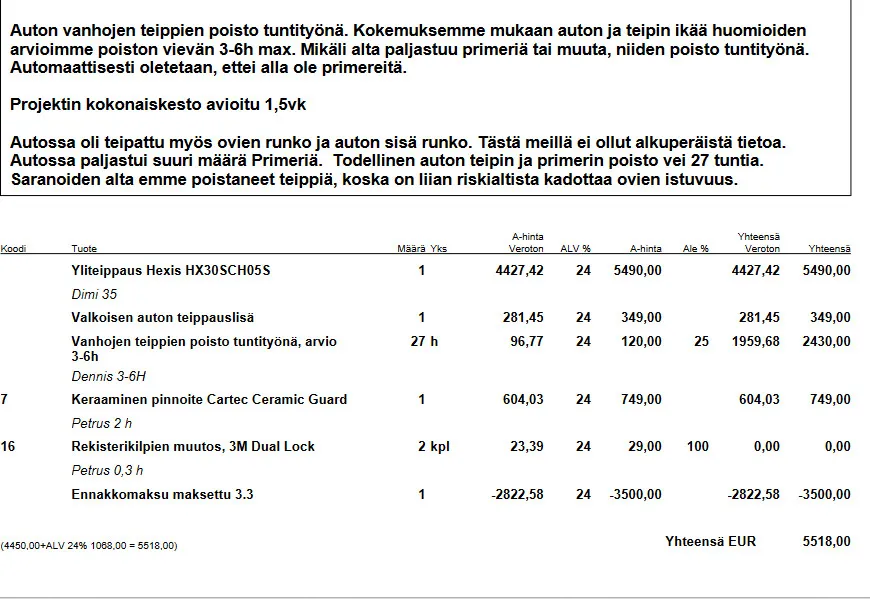
Here’s the video showing how we carried out the aforementioned customer’s wrapping: https://www.instagram.com/p/CrbMMXBAdsE/
https://restyling.fi/en/blog/ppf-tapings-user-guide/
What to Do After Tape Removal?
Once you’ve removed all the tape and adhesive residue, wash the car thoroughly using a solvent. Dry the car and inspect the paintwork. In a poorly executed wrapping, you may find knife cuts on the metal panels of your car. Check if there are any deep cuts in the metal parts of your car. These can lead to rusting over time. If you plan to wrap your car again, sand down these areas to make them smooth and repaint before wrapping. If you don’t intend to re-wrap your car, we recommend polishing the paintwork and protecting the surface with a ceramic coating. If your car’s paint still looks significantly untouched, consider installing a PPF (Paint Protection Film) (https://restyling.fi/en/blog/new-car-ppf-protection-guide/).
Do you want the job done responsibly, on schedule, and with the best value for your money? Ask for a quote from the professionals at Restyling Point, who do this with quality standards, values, and love.
On WhatsApp: +358445050624
Phone: +358445050624
By Email: [email protected]
Restyling Point Ltd – Leading in wrapping and protection treatments in the Nordic countries
https://www.youtube.com/shorts/vBhSNxSHUsE



